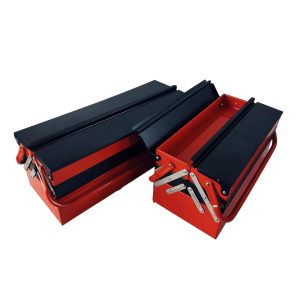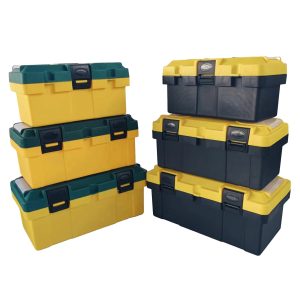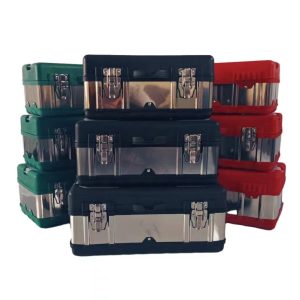Where did the toolbox come from?
The origins of hand tool boxes can be traced back to ancient times, when people began to use tools and developed various professional crafts. At first, people might use simple bags or baskets to carry tools for easy use on the job site.
As time went on and the need for more portability and organization increased, carry-on tool boxes began to appear. The use of portable tool boxes is documented in ancient Egypt, ancient Greece and ancient Rome. These early tool boxes were usually made of wood and had a main storage area and some dividers to accommodate different types of tools.
During the Middle Ages and Renaissance, the design of portable tool chests gradually became more complex and elaborate, and could be customized to the size and shape of specific tools in order to provide better organization and protection.
With the advancement of the industrial revolution and modern craftsmanship, the materials of portable tool boxes have also changed. Moving away from traditional wooden toolboxes, there is a gradual shift towards lighter and more durable materials such as metal (such as steel and aluminum alloys) or plastic.
Modern hand tool boxes are not just for carrying and protecting tools, they also focus on the combination of design and functionality. Many tool boxes come with features such as handles, latches, nesting lids, dividers, interior panels, and more to keep tools safe and easy to use.
Overall, the origins of the portable toolbox are related to the human need for tool carrying and organization, and over time, it has continued to develop and improve, becoming an indispensable tool for modern craftsmen and home use.
Tool box material composition:
The material composition of tool boxes can be divided into the following common types:
1.Metal tool boxes: Metal tool boxes are usually made of steel or aluminum alloy. This material offers greater durability and impact resistance, making it suitable for carrying heavier tools. Metal tool boxes are generally heavier but offer great protection.
2.Plastic tool boxes: Plastic tool boxes are usually made of materials such as polypropylene (PP), polyethylene (PE), or polycarbonate (PC). Plastic tool boxes are lightweight and durable, and can resist general impact and chemical corrosion. Additionally, plastic tool boxes often come at a more affordable price.
3.Plastic iron toolbox: Generally made of a combination of plastic and iron products. The box and lock are both made of iron. The bottom and lid of the box are made of plastic. The combination of plastic and iron makes the product lighter and stronger
In short, the material composition of tool boxes varies, and the appropriate material should be selected based on factors such as use needs, weight requirements, protective performance, tool type, etc.
Post time: 12-28-2023






